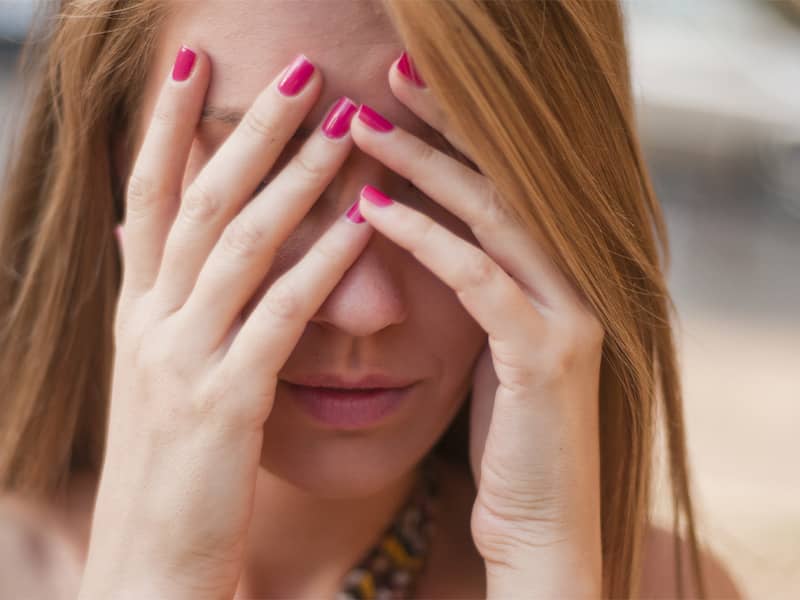
I taped a radio show the other day with Court Lewis of American Variety Radio in which he wanted me to cover the demographics of depression. So here we go. Many of these stats I assembled from the book Understanding Depression by J. Raymond DePaulo Jr., MD, Professor of Psychiatry at Johns Hopkins University School of Medicine. Others I picked in articles here and there.
Depression and Gender
More women are depressed than men because women have more to be depressed about than men. Kidding, of course. But I still don’t understand how our gender got stuck with labor pains and all that. Almost one in five women in the US will have one or more episodes of clinical depression, which is TWO or THREE times the rate of depressive illness that men have.
Some say the discrepancy can be attributed to all the mood-altering hormonal effects of the menstrual cycle, pregnancy, childbirth, infertility, and/or contraceptives. Based on the Armageddon that happened to me around childbirth, I’d give that theory a thumbs up. That, and I have to track my menstrual cycle because I’ve been known to go off on people a day or two before my period. However, men’s depression has been crawling up to meet us lately with the recession cutting more male jobs than female jobs. Naddy naddy boo boo.
Married men have lower rates of depression than single men, but not so for married women. (I have my theories but consider myself very lucky so I won’t go into them.) Women who are married are no better off than women who are widowed, divorced, or single (never been married).
Age and Depression
Before age 13 depression is fairly uncommon in both girls and boys. The biggest factor for severe depressive illness in children appears to be genetic. Both parents of severely depressed children often have depression.
More than a million Americans age 65 and older (or one in 12) suffer from serious forms of major clinical depression. Approximately 15 percent of people aged 60 years or older in long-term facilities have major depression, although much of it goes undiagnosed and untreated. Generally the rate of mood and anxiety disorder seems to decline as people age; however, often times a mood or anxiety disorder is not picked up in the elderly due to other medical problems.
A study was recently published in Archives of General Psychiatry that examined 2,575 people age 55 and older. Five percent had experienced a mood disorder such as major depression or bipolar disorder in the previous year, 12 percent had an anxiety disorder and post-traumatic stress order, and three percent had co-occurring mood and anxiety disorders.
Although depression can occur at any age, its onset is typically between the ages 24 and 44. Fifty percent of people with major depressive disorder experience their first episode of depression at about age 40, but this may be may be shifting to the 30s. Studies find that the rate of incidence is higher among middle-aged people.
Teenagers are at risk for depression. The evidence is in teen suicide rates, which are increasing yearly. The growing rate of depression in this group may reflect growing pressure on young people to attend college and meet the high expectations of their peers and parents. Problems with self-esteem may result from failure or disinterest in meeting these expectations. Low self-esteem can lead to a negative perspective of life and depression.
Depression and Socioeconomic
Status According to a 2009 Gallup survey, the rate of depression is nearly twice as high for Americans making less than $24,000 a year than it is for those with annual incomes above $60,000. So I guess all writers are depressed?
Race and Depression
According to DePaulo, African American and Puerto Rican populations do not have higher rates of depression in the US. However, a study in Israel found that current and lifetime rates of major depression were significantly higher among persons of North African origin than among Israelis of European background. Factors include prejudice, lack of education or job opportunities. African-Americans are much less likely to report symptoms of depression, so that might skew the statistics. According to a finding in the American Journal of Public Health, the prevalence of major depressive disorder was significantly higher in Whites than in African Americans and Mexican Americans
Depression in Urban Vs. Rural Areas
According to a 1999 National Health Survey: The prevalence of major depression was significantly higher among rural (6.11%) than among urban (5.16%) populations (p = 0.0171). Among rural residents, the prevalence of depression did not vary significantly with race/ethnicity. The increased prevalence of depression among rural individuals does not appear to be a result of rural residence itself, as place of residence was not significant in multivariate analyses that controlled for other characteristics of the individual.
Rather, the rural population contains a higher proportion of persons whose characteristics, such as poor health, place them at high risk for depression. Genetic Risk Factors for Depression Statistics show that the children of parents who suffer from depression are more likely to develop the disorder themselves. A person has a 27% chance of inheriting a mood disorder from one parent, and this chance doubles if both parents are affected. Studies of the occurrence of depression in twins show a 70 percent chance for both identical twins to suffer from depression, which is twice the rate of occurrence in fraternal twins.Therese Borchard writes the Beyond Blue blog on Beliefnet.

